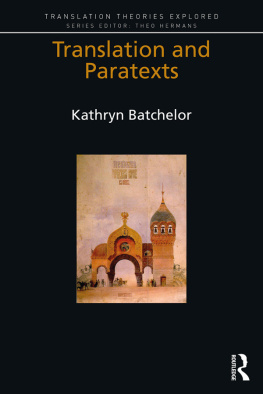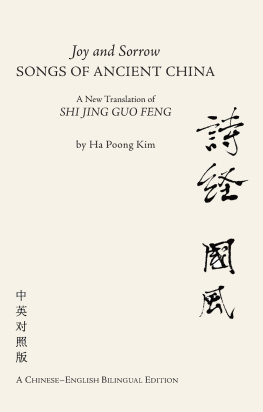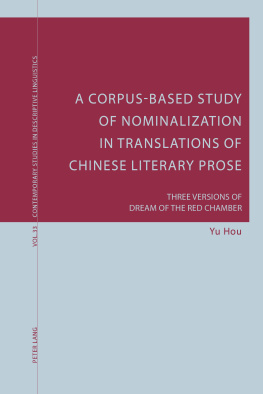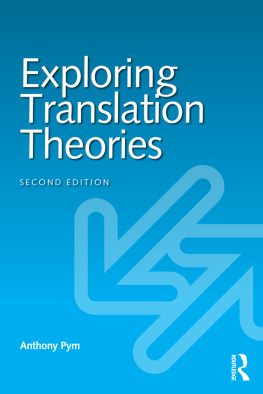Coding schemes
- 1 Story code (start with 001, followed by 002, 003 and so on)
- 2 Newspaper code
- 1=Reference News (RN)
- 2=Financial Times Chinese (FTC)
Source text
Independent variables | Target text
Dependent variables |
|
| 3. Story tone | 1. Framing tone |
| 1 = neutral | 1 = neutral |
| 2 = positive | 2 = positive |
| 3 = negative | 3 = negative |
| 4. Story type | 2. Framing meaning |
| 1 = Hard news | 1 =same |
| 2 = Soft news | 2 = added |
| 5. Story sensitivity | 3= reduced |
| 1 = sensitive | 3. Framing degree |
| 2 = partially sensitive | 1 =same |
| 3 = non-sensitive | 2 = strengthened |
| 3 = weakened |
| 4. Framing device |
| 1 =same |
| 2 = partly changed |
| 3 = totally changed |
Introduction
Imagine that you are sitting in your office. If you look directly outside the window, you will see hazy mountains far off and lustrous grass nearby. The view thus framed is so relaxing and tranquil that it obscures the fact that you are working on a busy campus. But if you leave your desk and look out from another angle of the same window, the scene will be different: students and staff walking rapidly either to the library or to the classroom. Looking out further from the same window, you might see traffic on the road beyond. This window exactly mirrors what news workers do. They feed us with reports on events from their own or otherwise different angles. What we read is not just what has happened but what the media has chosen to cover. What if the already selected angle of stories is to be represented through translation into another language? It will complicate the scenario even more.
Thanks to information technologies, events happening on one side of the globe can reach the other side instantaneously. Connections through the Internet or mobile devices provide us with a myriad of information catering to various tastes and covering innumerable contents from daily cares and concerns to projections way beyond imagination. This infrastructure facilitates the instantaneity of news flows around the world that simultaneously addresses members of different linguistic and cultural communities. Such simultaneity has intensified the opposition and interaction between the global and the local. Instances of localization efforts are substantiated in many newspapers websites, which continuously update and revise contents instantaneously. The conduit of this instantaneity is language. Although English has been the lingua franca in many international exchanges, it is still highly undesirable at the national level for disseminating ideas or penetrating into the inner culture of a designated society. Just as Cronin (2013, p. 16) points out, for many subjects in the informational economy, the language of (native) expression remains the preferred language of (individual) access. This instantaneous access to information in local language generates huge demands for simultaneous access, which has to be facilitated through translated news.
To meet this demand, some world-leading news agencies and newspapers provide news coverage in different languages. Reuters, for example, publishes its news in dozens of languages including Arabic, Chinese, French and Japanese, among others; Newsweek circulates in Spanish, Korean, etc. The Wall Street Journal Online was launched in 1996 and has been expanded into several languages over the years. Similarly, the Financial Times (FT) revamped its news coverage by expanding into Asian languages with its debut in China as the FT Chinese (FTC) in 2003. Chinese media is also on the forefront of importing ideas from the world in disseminating coverage of China-related topics as well as issues from the international community. With the implementation of the reform and opening-up policy in the 1980s, state-run authoritative newspapers such as The Peoples Daily ( ) and The Guangming Daily ( ) began to open up columns or full pages for news translated from abroad under various columns such as education, finance, features and culture, among others. Furthermore, China designates a special newspaper under the name of Cankao Xiaoxi ( the Reference News , RN) to publish only news translated from various newspapers worldwide. These translated news and newspapers provide fascinating perspectives and pose interesting questions for scholarly works to address.
This study focuses on the examination of two unique newspapers, the FT Chinese and Cankao Xiaoxi (the Reference News , RN), which publish translated news in the Chinese context. The interest of the book is not only about what news is translated and why it is translated, but more crucially how translated news should be interpreted and explained in the globalized world.
Source text of the FTC, the Financial Times (FT), is a quality British newspaper that builds its fame on reporting international and business news worldwide with a history of 125 years. According to its website, Today, the FT serves more readers and subscribers across the world than ever before and is recognized internationally for its authoritative and trusted news, commentary and analysis. As a representative Western newspaper in China, FT Chinese.com claims 2.6 million registered users to date in early 2018. Its news streaming is also freely accessible on devices operated by systems such as iOS, Android, Windows and Kindle.
The Chinese newspaper Cankao Xiaoxi (the Reference News , RN) was launched as early as 1931 under the Xinhua News Agency, the most authoritative news wire in China. It is a daily newspaper with the largest circulation in China that publishes news translated from various newspapers worldwide. Its unique style and dissimilar narratives from other domestic media are appealing to a large readership. With its online version (http://www.cankaoxiaoxi.com/) launched in recent years, it enjoys even larger popularity, the site claiming of having 693,300 users as of 10 January 2018. It has also launched its own app on mobile devices, whose users are incalculable.
As one of the representative newspapers, the FTC also enjoys its popularity among the Chinese middle class for its in-depth coverage of news stories and insightful comments on news events. Examining into the news on the website of the FTC finds prominent features differentiated from the news written directly in Chinese. News stories assert themselves in every respect as translated from English rather than written directly in Chinese. Firstly, the translators names are conspicuously shown at the end of a news story. On top of that, English proper names from the source text (ST) are always provided in brackets in the translated Chinese target text (TT). For example, English names of Chinese companies or people are kept in brackets instead of getting them across directly in Chinese. Concerning a Chinese state-owned enterprise for instance, translation of the Chinese company is followed by the English name in brackets (Rizhao Steel) instead of adopting the Chinese name directly as a news story written in Chinese usually does. Reading into news stories in comparison to the ST in English discovers that there are various deviations between the two versions: either a playing down of the tone or bringing out an implicit message. The initial presupposition was that it is not something caused by the translators failures, given the fact that almost all the translated texts are followed by the name of a translator instead of keeping him/her anonymized or invisible as is the practice of many international news agencies (cf. Bielsa & Bassnett, 2009). Initial comparison of the contents also points to disparate framing effects. Concerning events in Xinjiang for example, one incident was framed as a loss of innocent lives under the headline Further Violence Claimed Eight Lives in Xinjiang on the FT (30 December 2013), while it was framed as a terrorist attack in the Chinese media. In the translated news on the FTC on the same day, it was represented as 8 (explosion happened in Yarkand, Xinjiang, with 8 people killed).











